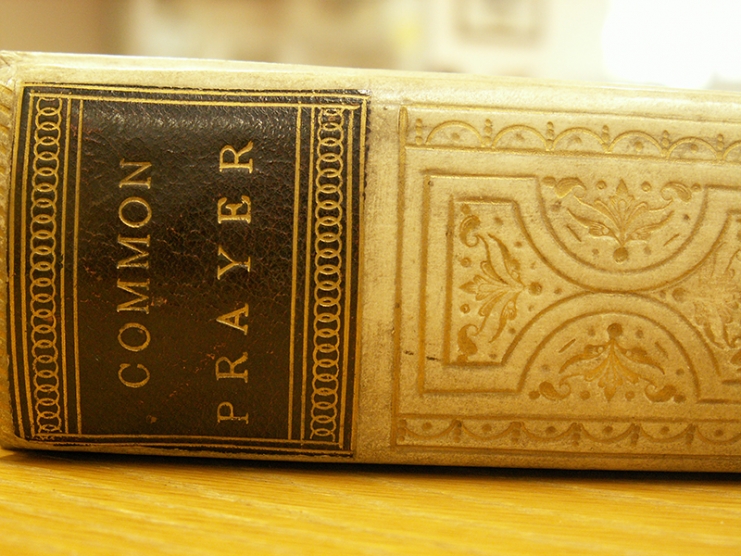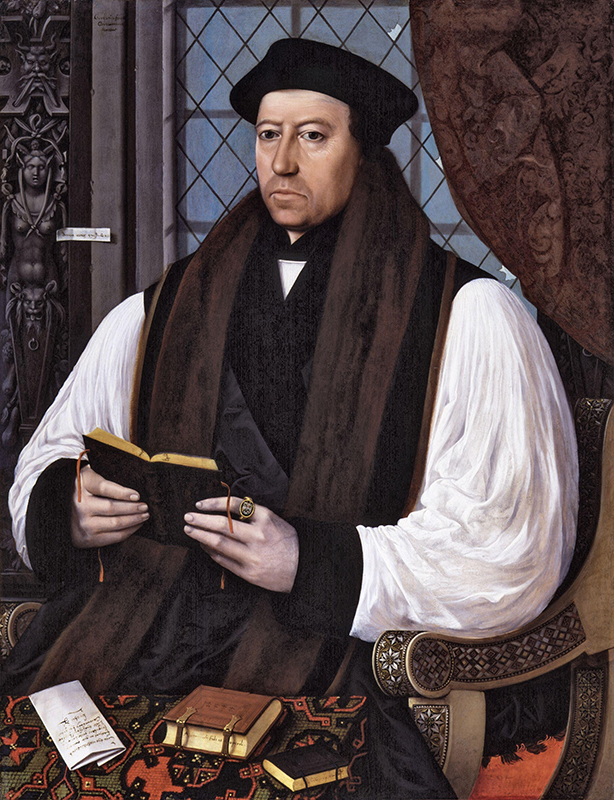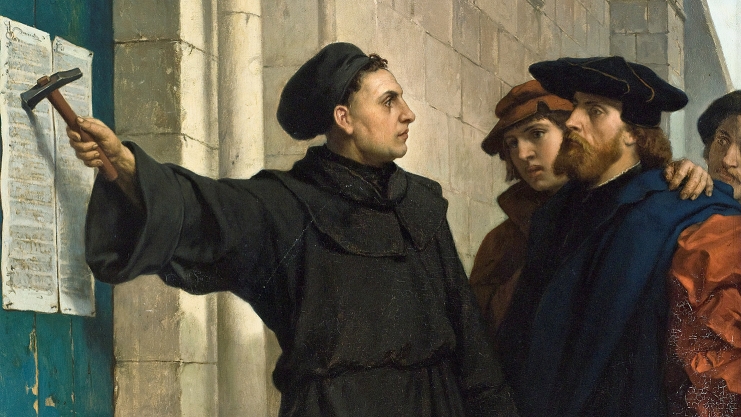On Being Anglicans
This essay aims to give an account of Christian discipleship as Anglicans in today’s world. Are there doctrines and practices that bind Anglicans worldwide and down the ages as a distinctive ecclesiastical body? What unique gifts do Anglicans bring to the wider Body of Christ and to the world?
These questions immediately spur us to give closer attention to the dogmatic foundation of being Anglican. From the outset, other ways are open to us in exploring Anglican distinctive:
1. Church Governance
One way is to explain Anglican distinctive in terms of church governance. Some may speak with pride on the constitution, canons and organisational structure of the Anglican church. Our church has a historic order that traces to the Apostles’ time, we would say. We can also point to the global structures of the Anglican Communion. All in all, the institutional stability, historical continuity, and global presence of the Anglican Church set Anglicans apart from many Protestant churches.
2. Cultural and Historical Roots
Another way to look at Anglican distinctive is to underscore the cultural and historical roots of the Anglican Church: The English established church was the mother church of many Anglican churches worldwide; the historical expansion of the Anglican Communion in the world was intricately bound with the history of the British Empire. True, this English legacy could be problematic to Anglican churches in former British colonies, nevertheless, an English association can be useful to Anglican churches. A visit from the Archbishop of Canterbury, for example, may raise the public prestige of the local Anglican church. It follows that Anglican churches are still psychologically connected to the Church of England. The Church of England binds Anglicans worldwide together, so to speak. Although Anglican churches worldwide are largely organised as autonomous, that is, self-governing, provinces, many still look to the Church of England for guidance on matters of faith, worship and practice.
3. The Middle Way
One can also explain Anglican identity as a middle way (via media) between the Roman Catholics and various forms of Protestantism. Interestingly, this interpretation of via media emerged largely in the nineteenth-century within the Oxford Movement, amid a deep wrestling on Anglican identity in England and in the United States of America. The central concern was to connect the ministry, worship and spirituality in the English established Church and American Episcopal Church less to the English Reformation in the sixteenth and seventeenth century, and more to the practice of the ‘one, holy, catholic and apostolic’ church in early Christianity. The focus therefore was to interpret the particular Anglican way as an ism: Anglicans are shaped more by a distinctive (and theoretical account of) Anglicanism instead of by its English experience. It was not an accident the American Episcopalian missionaries in China bequeathed Chinese Anglicans with the name Zhong Hua Sheng Gong Hui (Holy Catholic Church in China). This way to understand Anglican identity clearly is attractive in the present day. It gives Anglicans worldwide an imaginative way to differentiate themselves from both the Roman Catholic and Protestant communities. The use of vestments, ceremonial acts, liturgical practices and forms of services that one finds in Anglican churches today speak volume to this understanding of ‘Anglicanism,’ though the English Reformers would be bemused by such expressions of Anglican distinctive.
The Best of Both Worlds
These three presentations indeed can be useful for interpreting Anglican life and ministry. Those from independent churches may find the organisational stability, history and global presence of Anglican churches especially attractive. Anglicans have the best of all worlds! Similar to the Roman Catholics, the outer form of their church embodies historical continuity with the times of the Apostles, and like the Protestants, their faith, order and discipline are not dependent on the Roman Church.
But how useful are these presentations in equipping Anglicans to live out their discipleship in concrete terms? What do they have anything to do with the inner life: how Christians obey Christ as individuals and as a corporate body? Canon A5 on “The doctrine of the Church in the Province” of the Canons of our own Province of South East Asia underscores this problem:
The doctrine of the Church in the Province is grounded in the Holy Scriptures and in such teachings of the ancient Fathers and Councils of the Church as are agreeable to the said Scriptures. In particular such doctrine is to be found in the Thirty-Nine Articles of Religion, the Book of Common Prayer, and the Ordinal.
In fact, Canon A1 to A5 on the faith and order of the Province replicate similar canons of the Church of England. This hardly needs justification: The Archbishop of Canterbury was the metropolitan of the dioceses before the Province was established.
In South East Asia
Anglicans in South East Asia however would find it challenging in connecting their parish life and personal devotion to this formal doctrine of the church. In life, from parish life to personal devotion, and from baptismal preparation to ministerial formation, what Anglicans do in practice may have little to do with the official Articles of Religion, the Book of Common Prayer and the Ordinal. Arguably the Province has not yet produced its own Book of Common Prayer. Instead, there are different forms of authorised services in the dioceses. The Thirty-Nine Articles of Religion also do not appear in service books and official documents in the dioceses. And if the Book of Common Prayer of 1662 – the official Book of Common Prayer of the Church of England – is the standard, perhaps hardly any Anglican congregations use it in Sunday worship. In fact, in a globalising era, Christians draw their sources of inspiration from different places. Worship pattern, hymns, teaching materials, or devotional and mission practice may not be different from one church to another. The widespread use of the Alpha course is a case in point. One can argue that there isn’t any Anglican distinctive in everyday Christian life.
The English Reformation gave Anglican churches in all generations a theological and programmatic model on what it is to be part of Christ’s universal Church: to be church without being hierarchically under Rome.
This indeed put in doubt the three outlines of Anglican distinctives above. They focus on the external forms of the church. This can become a huge liability instead of an asset. The protracted disputes on human sexuality and on the authority of the Holy Scripture in the Anglican Communion in the past twenty years exposed this weakness. Anglicans find themselves entangled in decisions on matters of faith, order and discipline in Anglican churches in other parts of the world. It is more attractive, to some, simply to let go the insistences on matters of faith and discipline; that is, on the inner life of the church. Why cannot Anglicans simply find means to strengthen their external bonds? After all, they are already bound by shared cultural, sociological, and historical ties. Along this reasoning, what makes Anglicans a distinctive ecclesiastical body? There is a simple answer: Anglicans are the third largest Christian denomination in the world, other than the Roman Catholics and the Orthodox.
Such a way of thinking about Anglican life short-changes the holy trust that Anglican forebears have bequeathed to future generations. Christian life is centred in God and His redemptive work in Christ. And therefore, communion must necessarily rest on a dogmatic foundation of a robust doctrine of God. It cannot be explained solely in earthly terms. As the Reformers would put it, Christ
remains the head of the Church; He has not delegated this headship to any earthly institution. The task for Anglicans today is to rediscover the theological foundation of the Anglican Church and let it shape the character of their common life. But what is this theological foundation? Clearly, we can think of many important figures and events that have left lasting imprints on Anglican identity. Each of us has our favourite. One period however stands out: it is the English Reformation. Except for the English Reformation, Anglicans would still be part of the Roman Catholic Church. More importantly, the English Reformation gave Anglican churches in all generations a theological and programmatic model on what it is to be part of Christ’s universal Church: to be church without being hierarchically under Rome. The English Reformation was not a mere intellectual or political exercise. Clergy and people alike needed to undergo a complete psychological, emotional, and in fact a space-time upheaval. The social fabric of the Christian society centred in Rome was torn apart. Personal devotion in the medieval times was centred on communion with the dead, which was reinforced by the ceremonies and rites of the Roman Church. The English Reformers therefore needed to develop a new ecclesiological vision, on solid theological ground, to meet this deep human need. And they succeeded. The English Reformation therefore is especially relevant for today. It provides Anglicans in their respective nations an instructive lesson on ecclesiology: how they can be church without being hierarchically under any earthly focus of unity – be this the See of Canterbury, Rome or any other historic centre of mission and ministry. Anglicans embody the pilgrim character of Christian discipleship.
A Distinctive Theological Vision
The English Reformers held out a distinctive theological vision: the whole nation attentive to the Word of God, united in worship, and shaped by an evangelical interpretation of Christian tradition. We begin first with an introductory remark. The Thirty-Nine Articles of Religion (1571), the Book of Common Prayer (1662) and the Ordinal (strictly-speaking “The Form and Manner of Making, Ordaining and Consecrating of Bishops, Priests, and Deacons according to the order of the Church of England”) were not mere abstract and theoretical documents. They in fact set the condition for the English nation to establish and regulate a national church outside Roman jurisdiction:

- The Articles of Religion were fundamental declarations on faith, order and discipline;
- The Book of Common Prayer summoned all peoples in the one nation to worship God in the everyday language; and
- the Ordinal offered the English Church a lawful form and manner of establishing a regular ordained ministry, so that the pure Word of God is preached, and the sacraments duly administered.
These three documents were part of an expansive and ambitious project of Thomas Cranmer (1489-1556), the chief architect of the English Reformation: translation of the Bible into vernacular; commissioning of homilies to re-educate the clergy and people in the evangelical faith; a catechism for instructing the young; and reform of English law:
1. Attentiveness to the Word of God.
The Collect for the Second Sunday of Advent in the Book of Common Prayer aptly expresses this posture:
Blessed Lord, who hast caused all holy Scriptures to be written for our learning; Grant that we may in such wise hear them, read, mark, learn, and inwardly digest them, that by patience and comfort of thy holy Word, we may embrace, and ever hold fast, the blessed hope of
everlasting life . . .
Cranmer restructured the divine services, the church calendar, and the lectionary of the church to enable the whole people of God to hear, read, mark, learn, and inwardly digest the holy Scriptures; and this learning would bring about personal and communal godly living. He simplified the divine services of the day from eight to two (Morning and Evening Prayer). The observance of saints’ days was removed, except for those that were connected with the Gospel events. The table of readings followed the civic calendar, that is, from 1 January to 31 December. The appointed readings were read sequentially and according to the canonical order of the Scripture, that is, from the first chapter of Genesis to the end of Malachi, and the first chapter of Matthew to the end of Revelation. The Psalms were read once every month; the New Testament three times, and the Old Testament (and selections of the Apocrypha) once a year.
2. The Whole Nation United in Worship.
The Preface to the Book of Common Prayer sums up this vision:
It hath been the wisdom of the Church of England, . . . to keep the mean between the two extremes, of too much stiffness in refusing, and of too much easiness in admitting any variation from it. . . . [Our general aim is to do what] might most tend to the preservation of Peace and Unity in the Church; the procuring of Reverence, and exciting of Piety and Devotion in the public Worship of God . . .
 Painting by Gerlach FlickeThomas Cranmer
Painting by Gerlach FlickeThomas Cranmer
Cranmer sought to establish a common public space in which all peoples in the same nation can worship and obey God together. The English Reformers bequeathed to Anglicans in future generations a virtue of comprehensiveness: to discern what is essential and accommodate on matters that are indifferent. This is more than a matter of maintaining diversity in unity. Such can mean different things in a post-liberal and postmodern society. Cranmer’s via media has in mind the uniting of evangelical Christians of different persuasion, so that they can be renewed by the daily communal receiving of God’s law and advance the evangelical faith as a united community.
The gathering of a whole nation to worship and witness as a united people of God has an apologetical edge. Cranmer and the Reformers never lost sight of the reality of sin and the organised opposition of truth here on earth. Human laws must be enforced to curb the spread of sins, especially against the erroneous teachings (of Rome at that time) that would lead the people to stray and cause disunity in the nation. “On Ceremonies” in the Book of Common Prayer underscores this conviction:
. . . the wilful and contemptuous transgression and breaking of a common order and discipline is no small offence before God, . . . the appointment of the which order pertaineth not to private men; therefore no man ought to take in hand, nor presume to appoint or alter any public or common Order in Christ’s Church, except he be lawfully called and authorized thereunto.
Therefore, the doctrine (expressed in the Articles of Religion), worship (in the Book of Common Prayer), and the order (the form and manner of ordination of clergy) of the nation must be lawful. They were authorised by the lay monarch – instead of the Pope.
3. A Godly Order that is Shaped by an Evangelical Receiving of Ancient Customs.
Not every custom that is ancient in origin had to be retained or rejected. Cranmer began his essay “On ceremonies, why some are abolished, and some retained” (in the Book of Common Prayer) with these words:
Of such Ceremonies as be used in the Church, and have had their beginning by the institution of man, some at the first were of godly intent and purpose devised, and yet at length turned to vanity and superstition.
 Painting by Ferdinand Willem Pauwels, 1872Martin Luther nailing the 95 Theses in 1517
Painting by Ferdinand Willem Pauwels, 1872Martin Luther nailing the 95 Theses in 1517
Cranmer in fact revised The Book of Common Prayer and the Ordinal during his lifetime, to bring the faith and order of the English church more in line with evangelical beliefs. Three services especially absorbed his energy: the Holy Communion, the Burial Service and the Ordinal. There, he struck at the heart of “vanity and superstition.” He removed sacrificial understanding from the Holy Communion service. The Burial Service became a reminder to the living on their discipleship, instead of an absorption with prayer for the dead. He reduced the holy orders of the Roman Church to the threefold order (deacons, priests, and bishops), and refocused their ministerial function to the preaching of God’s Word. The giving of the Bible became the only instrument of ordination: “Take thou Authority to preach the Word of God.”
Anglicans hold out before fellow Christians of other traditions a vision of discipleship: a united people, under a common discipline, renewed by the sacraments, to preach and teach the pure Word of God to the nation.
Anglican Churches Today
Anglican churches today are in different situations from the time of the English Reformation. Our service books, lectionary, devotional practice are hardly the same as
those in Cranmer’s generation. The Christian situation clearly is different: ecumenism and charismatic renewal have brought churches closer to one another.
Nearly 1,500 years later, and half way around the world, what would Cranmer say to us? In what ways, to him, are Anglicans a distinctive ecclesiastical body? Can we indeed become a life-giving and truth-witnessing global body? He would probably say:
My sons and daughters, follow Christ in deeper ways:
- Why are you engrossed with sights and sounds? Hear the Word today!
- Why are you merely satisfied with church growth statistics of your local Christian community? Be a strong and united Christian community to uphold truth, peace and justice in your nation.
- Why do you reduce apostolicity to ceremonies and vestments? Preach the Word, fulfil your ministry to all peoples and in all situations.
Anglicans hold out before fellow Christians of other traditions a vision of discipleship: a united people, under a common discipline, renewed by the sacraments, to preach and teach the pure Word of God to the nation. Jesus calls us to radical discipleship: to move out from the shallow waters of denominational loyalty and cultural ties, to realign our personal and corporate life more and more to the Gospel. This sober and provisional understanding of church identity, always open to the irruption of the Holy Spirit, is perhaps what makes being Anglicans
challenging and unsettling.


